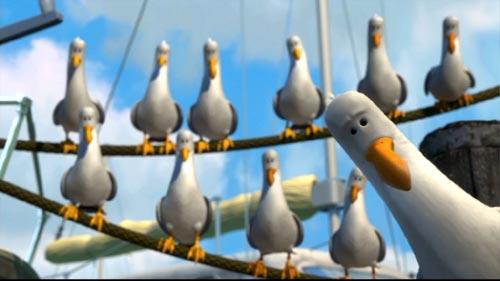A brilliant tale found on the Chilling Effects Website. It contains exotic environments, legal threats, mad claims and of course the Marx Brothers. Does reality get better than this?
While preparing to film a movie entitled A Night in Casablanca, the Marx brothers received a letter from Warner Bros. threatening legal action if they did not change the filmâ??s title. Warner Bros. deemed the filmâ??s title too similar to their own Casablanca, released almost five years earlier in 1942, with Humphrey Bogart and Ingrid Bergman. In response Groucho Marx dispatched the following letter to the studioâ??s legal department:
Dear Warner Brothers,
Apparently there is more than one way of conquering a city and holding it as your own. For example, up to the time that we contemplated making this picture, I had no idea that the city of Casablanca belonged exclusively to Warner Brothers. However, it was only a few days after our announcement appeared that we received your long, ominous legal document warning us not to use the name Casablanca.
It seems that in 1471, Ferdinand Balboa Warner, your great-great-grandfather, while looking for a shortcut to the city of Burbank, had stumbled on the shores of Africa and, raising his alpenstock (which he later turned in for a hundred shares of common), named it Casablanca.
I just donâ??t understand your attitude. Even if you plan on releasing your picture, I am sure that the average movie fan could learn in time to distinguish between Ingrid Bergman and Harpo. I donâ??t know whether I could, but I certainly would like to try.
…I have a hunch that his attempt to prevent us from using the title is the brainchild of some ferret-faced shyster, serving a brief apprenticeship in your legal department. I know the type wellâ??hot out of law school, hungry for success, and too ambitious to follow the natural laws of promotion. This bar sinister probably needled your attorneys, most of whom are fine fellows with curly black hair, double-breasted suits, etc., into attempting to enjoin us. Well, he wonâ??t get away with it! Weâ??ll fight him to the highest court! No pasty-faced legal adventurer is going to cause bad blood between the Warners and the Marxes. We are all brothers under the skin, and weâ??ll remain friends till the last reel of â??A Night in Casablancaâ?? goes tumbling over the spool.
Sincerely,
Groucho Marx
Unamused, Warner Bros. requested that the Marx Brothers at least outline the premise of their film. Groucho responded with an utterly ridiculous storyline, and, sure enough, received another stern letter requesting clarification. He obliged and went on to describe a plot even more preposterous than the first, claiming that he, Groucho, would be playing â??Bordello, the sweetheart of Humphrey Bogart.â?? No doubt exasperated, Warner Bros. did not respond. A Night in Casablanca was released in 1946.
I must use this story (the full Marx letter is here) in one of my lectures.





